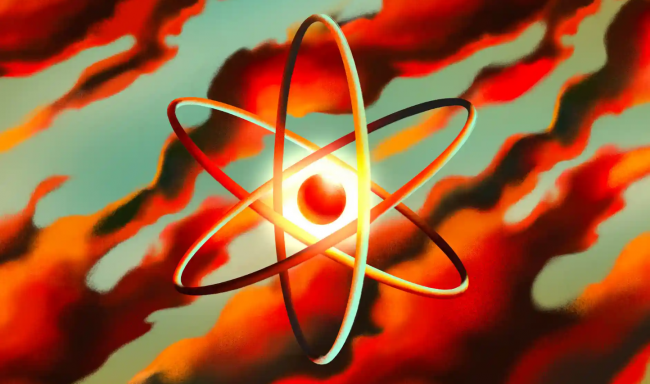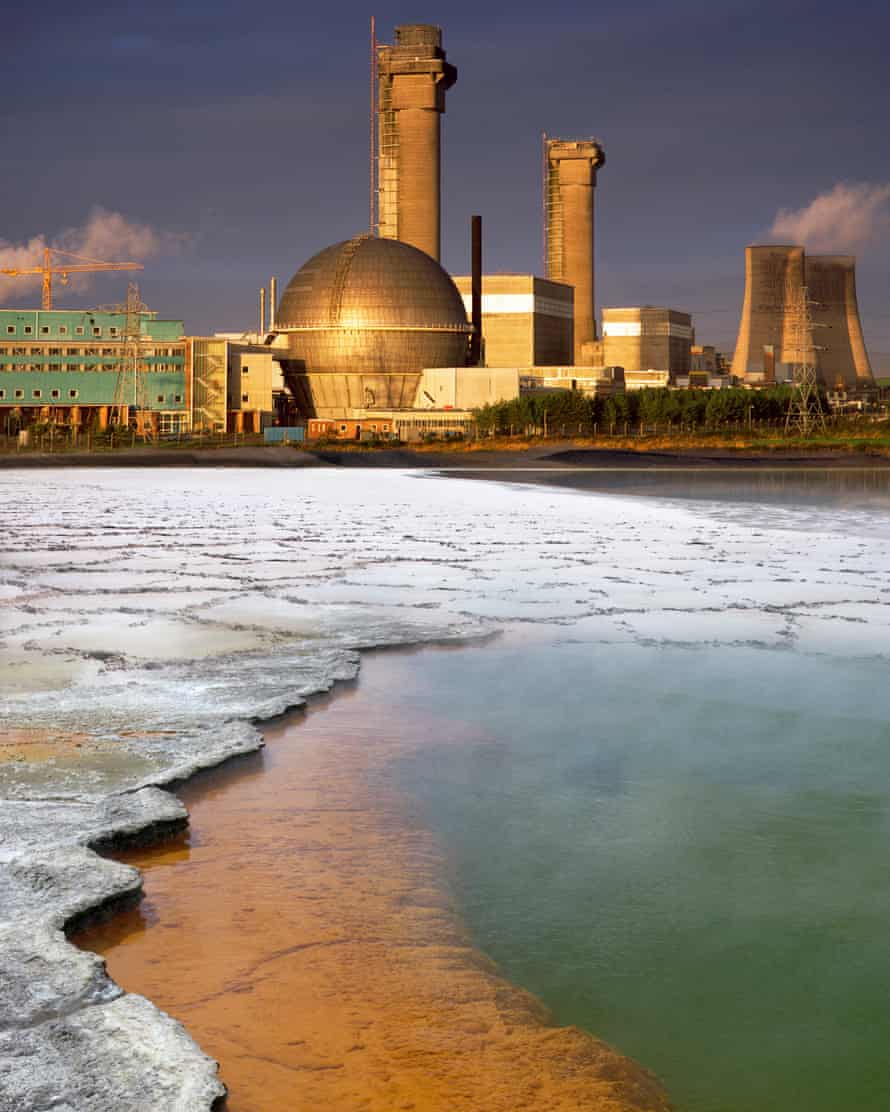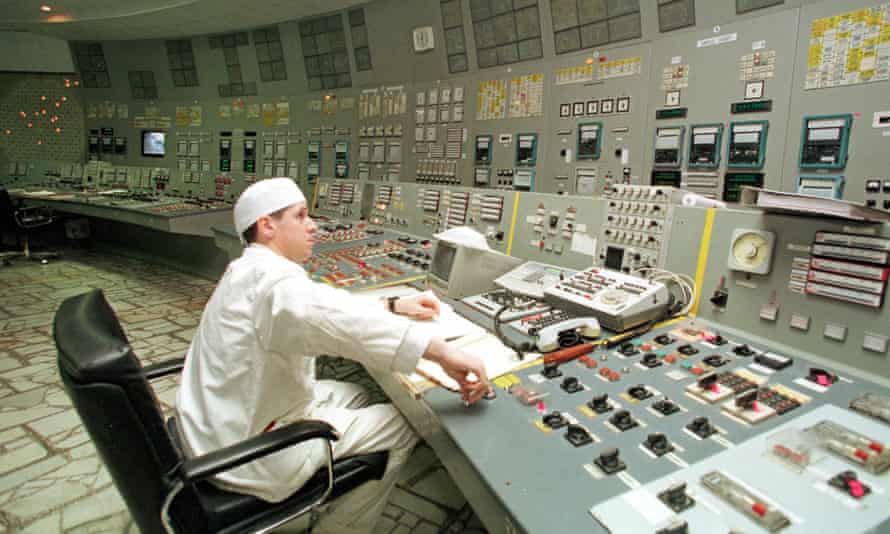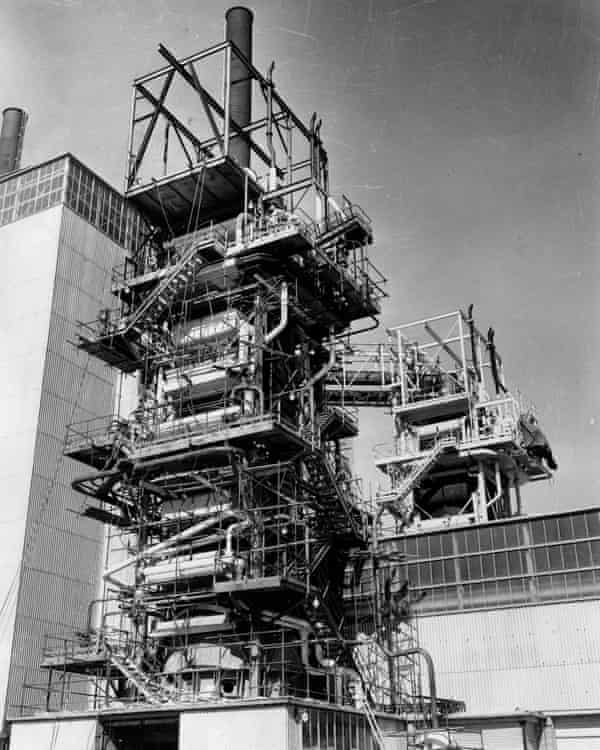Articles Menu

May 14, 2022
On 10 October 1957, Harold Macmillan sent a letter to President Dwight Eisenhower. The question he asked his US counterpart was: “What are we going to do about these Russians?” The launch of the Sputnik satellite six days earlier had carried with it the threat that Soviet military technology would eclipse that of the west. The prime minister was hoping to boost British nuclear capabilities, and was desperate for US cooperation.
On that same day, however, the UK’s most advanced nuclear project went up in flames – putting the knowledge and bravery of its best scientists to the test, and threatening England’s peaceful countryside with a radiological disaster.
One atomic energy official would later refer to the piles as “monuments to our initial ignorance”, and it was ignorance about one particular nuclear phenomenon that almost led to disaster. “Wigner energy” is the energy that accumulates in the graphite blocks that make up the main body of the reactor while the fission reaction is taking place. If it’s not released in time, the energy can build up to such an extent that it ignites the graphite. Periodically, a special operation called “annealing” has to be undertaken in order to release the excess energy.

Macmillan wanted Windscale to produce more plutonium and tritium for a hydrogen bomb as quickly as possible. But annealing required stopping the reactor. The Windscale Technical Evaluation Committee decided it would be safe to do it less often. Managers had scheduled the annealing of Pile No 1 for early October 1957, but it was long overdue.
It began at 11.45am on 7 October, under the supervision of physicist Ian Robertson. Everything seemed to go according to plan, and after a long day Robertson went home to get some sleep. He felt unwell. The whole village was feeling the impact of a global flu pandemic – a virus that combined strains of avian and human influenza that had emerged from Guizhou, China, the previous year. Many of Robertson’s colleagues and their families had fallen ill. But no attempts were made to quarantine, and people had continued to show up for work. After spending a few hours at home, Robertson was back at the pile for 9am the following day. It must have seemed as if the flu had not only infected Robertson but the reactor as well. The temperature in the pile was not behaving as predicted and it was a challenge to keep things stable. The operators managed to maintain control for the rest of the day and night, but on 9 October the temperature began to rise again. As the situation became critical, no one could tell what was going on inside the pile.
“Someone suggested that we actually have a look at the reactor itself,” Arthur Wilson, then a 32-year-old instrument technician, later recalled. “We thought: ‘What the hell.’ I opened the gag-port and there it was – a fire at the face of the reactor.” Normally it was dark, but now the channels were glowing bright red from the soaring temperature. “I can’t say I thought a lot about it at the time, there was so much to do,” continued Wilson. “I didn’t think ‘Hurrah, I’ve found it.’ I rather thought, ‘Oh dear, now we are in a pickle.’”
A ratcheting up of tensions with Russia, a global pandemic and a scramble for nuclear energy with potentially deadly consequences. The echoes of 1957 are powerful, and though much has changed, we would do well to heed them.
When Russia launched its missiles at targets deep inside Ukrainian territory on 24 February, 2022, the shockwaves were felt far beyond that country’s borders. Outside politics, nowhere was the impact stronger than in the energy markets. Prices that were already hitting historical highs jumped even higher. European countries immediately saw the need to wean themselves off dependence on Russian gas.

But where should they look for alternatives? Liquified natural gas? Oil? Coal? None of those alternatives would help in the fight against the climate crisis. Nuclear energy – which, after all, provides France with 70% of its electricity – was quickly touted as a solution. In fact, a few weeks before the start of the war, President Emmanuel Macron had already announced a programme to construct 14 new nuclear reactors. In neighbouring Belgium, which had originally planned to phase out nuclear energy by 2025, a decision was made to extend the life of two reactors by an additional 10 years.
In the UK, Boris Johnson’s rhetoric extended even further. He announced “nuclear is coming home” (Calder Hall, right next to Windscale, was among the first civilian nuclear reactors in the world) and pledged to make it 25% of the nation’s electricity mix by 2050.
On the surface, the switch to nuclear makes sense. It would not only enable European countries to meet their ambitious net zero targets, since it produces no CO2. It would also make them less vulnerable to Russian threats, and allow them to stop financing the Russian war machine
In order for this method of producing electricity to be safe, everything else in society has to be functioning perfectly
But the invasion also provided a chilling reminder of just why so many governments have treated nuclear power with great caution over the years. On the first day, Russian troops in unmarked uniforms took control of the Chernobyl nuclear power plant, the site of the worst ever nuclear disaster. On the following day, electronic monitors in the Chernobyl exclusion zone indicated sharp spikes in radiation levels as heavy equipment and trench-digging by Russian soldiers threw up contaminated dust.
The world woke up to an even more nightmarish reality a week later, when news arrived from the Zaporizhzhia nuclear power plant in southern Ukraine. Reports suggested that Russian forces had shelled the plant and set one of its buildings on fire. Russian troops left Chernobyl once they lost the battle for Kyiv, but they remained in Zaporizhzhia, further endangering the operation of Europe’s largest nuclear power station. On 26 April, Ukraine’s state-run atomic energy company reported that Russian missiles aimed at the town of Zaporizhzhia flew at low altitude over the reactor buildings.
What the Russian takeover of these nuclear facilities exposed is a hazard inherent in all nuclear power. In order for this method of producing electricity to be safe, everything else in society has to be functioning perfectly. Warfare, economic collapse, climate change itself – all of these increasingly real risks make nuclear sites potentially perilous places. Even without them, the dangers of atomic fission remain, and we must ask ourselves: are they really worth the cost?
And Windscale, of course, was just the beginning. At Three Mile Island, Pennsylvania, in 1979, a partial meltdown prompted 140,000 people to temporarily evacuate the surrounding area. Less than a decade later, in 1986, a catastrophic explosion at the Chernobyl plant eventually resulted in an entire region becoming uninhabitable, with up to half a million people permanently displaced. The official death toll was 31, with a further 134 cases of acute radiation sickness. But United Nations agencies have since predicted the number of premature deaths from the effects of Chernobyl radiation-induced cancers could be as high as 4,000, while the Union of Concerned Scientists suggests more than six times that. In 2011, an earthquake in the Pacific ocean triggered a tsunami that led to an interruption to the supply of electricity to the Fukushima nuclear complex on the east coast of Japan – a series of explosions and three reactor meltdowns followed. Today the number of deaths from Fukushima-related cancers is estimated at 1,500, while estimates of mortality from all causes related to the Fukushima accident now stand at 10,000. Around 150,000 people were forced to evacuate the region.
These are frightening statistics. But would it be unreasonable to suggest that these accidents are a thing of the past, that we have learned from them and are far safer today as a result?

Technological developments, growing international cooperation and rising safety standards did indeed do a great deal to ensure that no major nuclear accident occurred for 25 years after Chernobyl. But the Fukushima explosions demonstrated that such improvements have not eradicated the dangers surrounding nuclear power plants. One basic unresolved issue is the way in which the reactors are designed – they stem from military prototypes intended to produce plutonium or to power nuclear submarines. The world also has to deal with a new set of threats associated with the rise of international and domestic terrorism in both traditional and cyber forms, as well as the reality of the conventional wars that might include attacks on nuclear power plants.
This is the second great risk from nuclear power: even if a reactor runs for its lifetime without incident, you still have a lot of dangerous material left at the end of it. Fuel from nuclear power plants will present a threat to human life and the environment for generations to come, with the half-life of some radioactive particles measured in tens of thousands of years. One of the solutions to this is to bury high-level radioactive waste deep underground, in former mines such as at Morsleben in Germany. The United States proposed an underground facility for that purpose, to be called the Yucca Mountain nuclear waste repository, but the project, which met with strong opposition from the indigenous population and the general public, has been shelved. Nuclear power plants generally have no alternative to storing their high-level radioactive waste on site.
The Waste Isolation Pilot Plant, an underground facility more than 600 meters below the surface of the earth in New Mexico, is where the US government now buries high-level nuclear waste from weapons production. Between 10 and 20 years from now, when the underground facilities have been filled with waste, the authorities will have to seal the entrances with concrete and place “danger zone” signs at ground level.
The problem is that the underground store will still be contaminated in 300,000 years, and no one can predict what language our descendants will read or speak at that time, or what messages might convince them not to dig into the New Mexico rocks. In the 1990s nuclear security experts proposed symbols, earthworks and mounds of rubble designed to convey an appropriate sense of menace to anyone stumbling on the area. The intended message was: “This place is not a place of honor … No highly esteemed deed is commemorated here … nothing valued is here. What is here was dangerous and repulsive to us. This message is a warning about danger.”
This leaves us with the obvious question: if nuclear power is not a safe option for the future, what should we do about the growing need for energy and the demands imposed on us by the climate crisis? It’s true that renewables cannot fill the gap left by Russian supply overnight, but surely new investments should go not into the improvement of outdated 20th-century technologies, but instead into the energy technologies of the 21st century. Although coal and oil between them still account for 60% of global electricity generation, renewable sources – which include hydroelectric, biogas, wind and solar – now account for nearly 29% and are growing. This share can be boosted: new research should be encouraged, grid infrastructure should be built up, and storage capacity increased. Billions that would otherwise go to new nuclear infrastructure, with all the attendant costs of cleanup that continue for decades and beyond, should be pumped instead into clean energy.
In the meantime, we obviously have an existing nuclear industry, and the solution is not to run away in panic, but to take good care of the facilities that already dot our countryside. We must not abandon the industry to its current state of economic hardship, as that would only mean inviting the next accident sooner rather than later. We should improve the safety of existing nuclear reactors by creating new standards to protect them not only from the natural disasters but also from man-made ones such as war.
The Windscale piles were shut down in the autumn of 1957. That was not the end, but rather the beginning of a process that took decades to complete. Shutting down a nuclear facility is no easy task: since Wigner energy remained in the graphite of the piles, they needed constant monitoring. For decades, technology and equipment required for the proper decontamination of the site were lacking, and it was not until 1999 that work began on removing the highly contaminated parts of the reactor, along with the remaining 15 tonnes of fuel, from the damaged area of Pile No 1. The Windscale piles entered the new millennium without fuel but with their deteriorating stacks still reaching dangerously into the sky. While the chimney of Pile No 2 was partly dismantled in 2001, work on demolishing No 1 only began three years ago.
Those stark concrete piles lasted from the beginning of the cold war to the brink of a new one. But as uncanny as the other parallels may seem, this time we do not need to plunge headlong into a nuclear future.